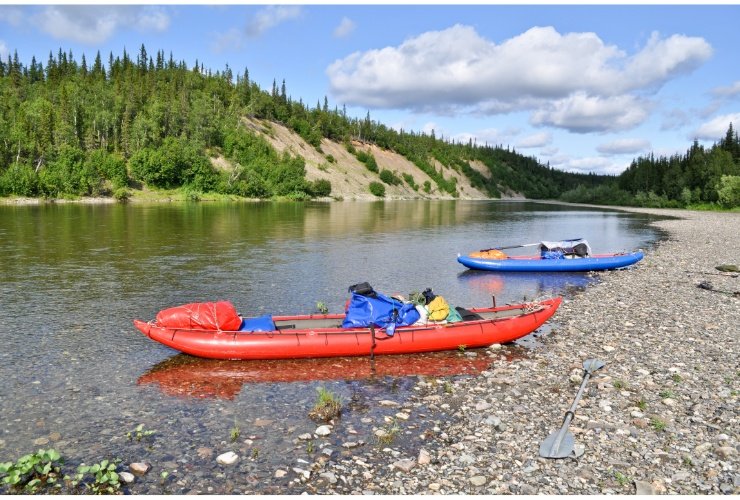Can one person use a 2-person kayak? The answer is yes, but there are some important things to pay attention to or you will not have a good experience.
While two people normally operate a tandem kayak (two-people kayaks), it’s not uncommon to find some scenarios where they might be paddled solo. It’s true that one person can use a two-person kayak, but there are also some vital things to consider before you get started.
This guide will first cover how to pilot a tandem kayak solo, and then discuss everything else you need to know.
Key Takeaways
- You can paddle a tandem kayak on your own, but there will be significant difficulties.
- While paddling a tandem kayak solo is possible, you’ll need to carefully consider what conditions you’ll operate in.
- There are situations when an individual might want to paddle a tandem kayak solo (like bringing a pet or needing to carry an unusual amount of equipment).
- There are alternatives to a tandem kayak for the solo kayaker – some touring kayaks and fishing kayaks are designed to haul lots of equipment.
How To Paddle a Two Person Kayak by Yourself
While most kayaks benefit from just diving in and getting accustomed to the feel, if you’re going to paddle a tandem kayak solo there are some things you need to prepare.
It should be noted that solo paddling a tandem kayak is not something that beginners should do; you need to have fairly good technique and know what you’re doing.
Shift the Seat Toward the Middle
Not every tandem kayak will have a moveable seat (especially older ones); however, if yours does, shift the rear seat toward the middle of the cockpit.
This is the most balanced position you can paddle a tandem kayak from, especially because they’ll be a lot longer than your average kayak.
- Reposition the rear kayak seat towards the middle of the hull.
- This ensures as much equal weight distribution as possible.
If you have an old hard shell tandem kayak that doesn’t have moveable seats, then you’ll need to pay attention to the next section carefully.
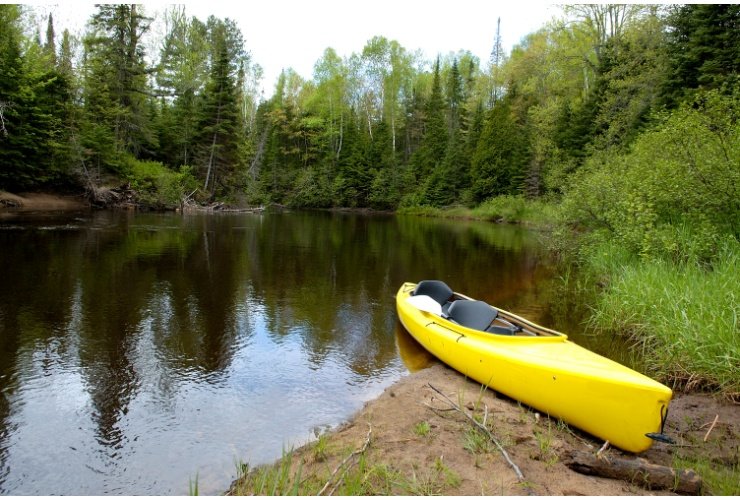
Make Sure the Tandem Kayak Is Balanced Properly
Even if you have a moveable seat, you’ll want to ensure the kayak is balanced correctly. As long as you don’t overload one end of the tandem kayak you should be ok – but what if the seats are fixed?
You’ll need to start adding weight, or it’s going to feel very awkward paddling, and you’ll most likely find yourself going nowhere fast.
- You’re most likely going to need to add weight to the front of the kayak, as a solo paddle will be paddling from the rear seat.
- The amount of weight you’ll need will depend on how much gear you have and how much you weigh.
- You should move the weight as far forward as you can. Any storage spaces are great for gear and equipment, but don’t forget that moving your gear around frequently will affect your kayak’s stability.
Use the Correct Paddle (And Technique)
Solo paddling a tandem kayak will require a paddle that may be longer than you’re used to.
As you’ll be closer to the middle of the kayak, you’ll be sat in an area that’s wider, which can make your technique less efficient and make turning and accelerating significantly harder.
A longer paddle will also allow you to reach the water without compromising your technique or your balance.
A longer paddle also has the advantage of making acceleration a bit easier, you can hold the paddle more vertically without having to lean to one side.
Install a Rudder
It can be tricky piloting a tandem kayak solo in good conditions. But what happens when things take a turn for the worse and mother nature turns against you?
Installing a rudder can be helpful here; a rudder helps you both turn your kayak and can help keep it stable in strong winds or busy water.
Tandem kayaks can struggle in harsh winds because the hull is wider and less maneuverable. When you’re on your own, these challenges get multiplied further. Any imbalances in weight will further contribute to this – so a rudder can be of great assistance here.
Avoid Rivers, Creeks, and Tighter Waterways
It goes without saying that there are some situations where it’s just not a good idea to be a one-person unit in a two-person kayak, one of these is in narrow waterways.
Narrower waterways generally require more agile turning to avoid obstacles and keep your kayak in a good direction; errors here are very forgivable in a normal one-person kayak.
- Obstacles from narrower waterways can be a problem if you’re only one person in a tandem kayak.
- Agility and acceleration are compromised – you’ll get from point A to B in a tandem kayak but on your own, it won’t handle well.
Inflatable Tandem Kayaks Are the Easiest To Paddle Solo
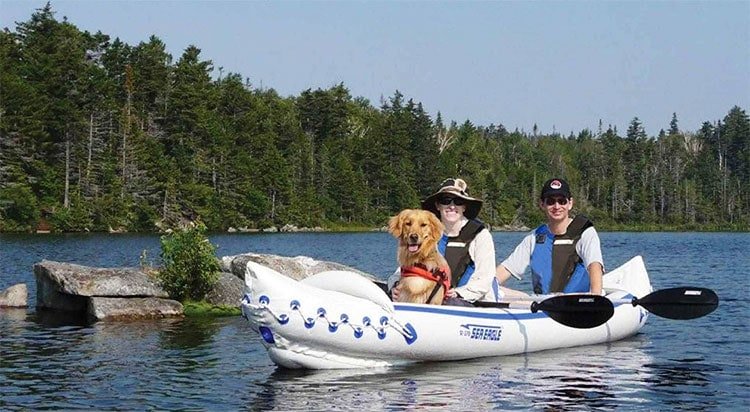
There’s nearly a suitable kayak type for everyone and if you’re looking for a two-person kayak that can be operated by a single person then tandem inflatable kayaks are a solid choice.
- Inflatable tandem kayaks can very frequently be set up for solo paddlers because of the ease of shifting seats (a lot of models have a “solo configuration seat position” built in, simply shift the rear seat forwards to the middle).
- Inflatable kayaks give you all the advantages of paddling solo in a tandem kayak and have fewer downsides.
- Inflatable kayaks are nearly always more stable (thanks to air-filled tubes used in the manufacturing process).
- You’ll still need to make sure the weight is balanced if you’re using an inflatable kayak, but it doesn’t need to be as perfect (thanks to the extra stability).
What’s the Point in Paddling a Two Person Kayak Solo?
If paddling a tandem kayak on your own is so much trouble then why should anyone bother?
There are circumstances when it may be worth your while, and the section below will cover these in detail.
However, the main benefit that tandem kayaks offer will be down to storage space and higher maximum weight capacity. If you carry tons of equipment or go on long expeditions, this may suit you.
You Need Space for Your Gear
While there are kayaks designed for more gear storage, in specific situations, you might need extra space or additional weight capacity.
If you’re in a secluded area or multi-day kayakers on overnight adventures, it may be more efficient to load up a tandem kayak with supplies (due to its added weight capacity).
Tandem kayaks are the longest kayaks (aside from the racing frames) and have enough width to provide tons of extra space that you might need.
You Want To Bring Your Dog Along
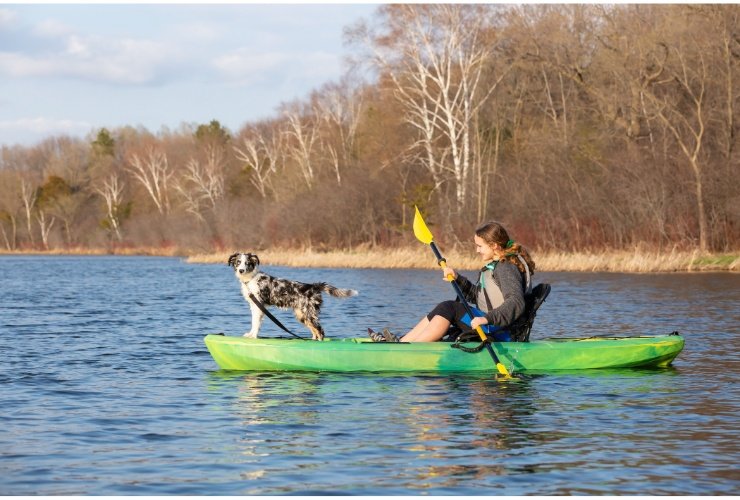
Kayaking with pets is becoming increasingly popular. While kayaking with your cat is never going to be a good idea, dogs make excellent companions and will enjoy the scenery and novel environment.
A tandem kayak provides your canine companion enough space to be comfortable without being perched too close to the edge of the boat.
You’ve Lost Your Paddle Partner (And You Don’t Own Any Other Kayaks)
You might have a tandem kayak partner that you regularly kayak with, but perhaps they are under the weather or don’t have the motivation to kayak like they used to. There’s nothing wrong with taking a tandem kayak on the water on your own.
However, if you’re not used to operating these solo, you should ease in gradually and get used to it.
Stuff Every Solo Kayaker Should Be Aware of About Tandem Kayaks
There are some important facts that any person paddling a two-person kayak on their own should understand before setting out.
A lot of these are performance-based expectations that you should have. Most kayaks don’t have an “engine” as the paddler provides the force to propel the vessel through the water. This means two-person kayaks are not going to run as well when you’re on your lonesome.
Solo Paddling a Two Person Kayak Is Not for Beginners
This was briefly touched on at the start of the article, but you should not try and pilot a tandem kayak on your own if you’re a beginner.
You need a good understanding of your limitations and what water conditions you can safely handle before you get on a tandem kayak on your own.
Trying to learn good basic paddling techniques and attempting to control a much larger and more difficult-to-handle kayak is a recipe for failure.
You’ll Have Less Maneuverability
Tandem kayaks are not the most maneuverable kayaks in general because of their length, but this gets amplified when two paddlers get replaced with one.
Taking your tandem kayak in any environment where there might be faster-flowing water currents or obstacles will lead to the likelihood of an accident.
Tandem Kayaks Are Heavy To Lift
It can be overlooked just how heavy a tandem kayak can be, especially if you’re used to lifting yours with the aid of a partner.
While inflatable tandem kayaks are much easier to move around and transport, the hard shell varieties are heavier and you might have to put some forethought and planning into how you’re going to move yours around.
This is especially true if you have lots of gear to transport on your own as well.
You won’t Reach High Speeds on Your Own in a Tandem Kayak
Theoretically, tandem kayaks have the highest potential speeds (thanks to having a longer waterline than most other kayaks).
Unfortunately, this gets flipped to the opposite when you’re a solo kayaker. It takes a lot more muscle to power a longer kayak, and many tandem kayaks range among the longest.
It’s going to feel a lot more difficult to accelerate and feel like you’re moving at a good pace, especially without compromising balance and technique. This also translates to getting fatigued more quickly, so it’s also important to make sure you can cover the distance you plan to on your tandem kayak.
There Are Some Safety Concerns
The lack of maneuvering power and the possible weight imbalances that can happen to a solo kayaker in a tandem kayak can be the cause of safety concerns.
If you’re on the ocean and the winds pick up, or the water turns choppy, it may be significantly harder to reach the shore or get out of the wind.
There’s also the risk of the tandem kayak being capsized, and if your gear isn’t securely attached this could lead to expensive losses.
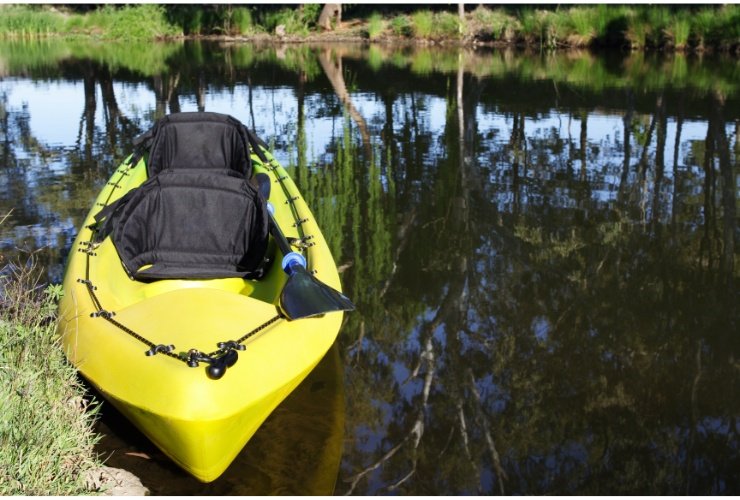
As a Solo Paddler, You Might Want To Look Into Alternatives
Depending on your personal situation or the conditions you plan to kayak on, it may be absolutely fine to go tandem paddling solo. That said, there are other options available to you that may be much more convenient.
Fishing Kayaks Are Stable and Have Lots of Storage Space
Fishing kayaks are built primarily for gear storage and stability. Unless there’s a need for a lot of storage space for a large amount of equipment, you’ll most likely have everything you need on a fishing kayak.
- Fishing kayaks can also come in inflatable varieties for extra stability.
- Fishing kayaks are much easier to operate on your own.
- This kind of hull is perfect for shorter kayak camping trips.
- They are much easier to transport and lift on your own.
Some Touring Kayaks Are Built for Solo Kayakers on Long Expeditions
There are touring kayaks that can reach good lengths (approaching around 15 feet) that provide plenty of storage room but are also much easier to operate and will perform better.
- A touring kayak is built for one person, which means there are no weight-balancing concerns.
- You can get attachments like gear trailers if you need to pack extra gear.
- It will generally be a much easier and better experience piloting a single kayak built for one.
Don’t Forget About Inflatable Kayaks
Inflatable kayaks of all kinds are available, they are generally much more stable and have higher weight capacity. They are easier to transport and store, and they’re built from very robust materials.
These can be a fantastic option for nearly anyone and are a good choice if you’re going to be carrying a lot of extra gear.
Conclusion
Paddling a tandem kayak solo is very much possible and in some situations, it might be a good idea. However, even the best kayakers are going to come up against some serious difficulties, and there are other options available to you, depending upon your circumstances.
Thank you for reading. If you found the content here useful then please like, comment, and share.

